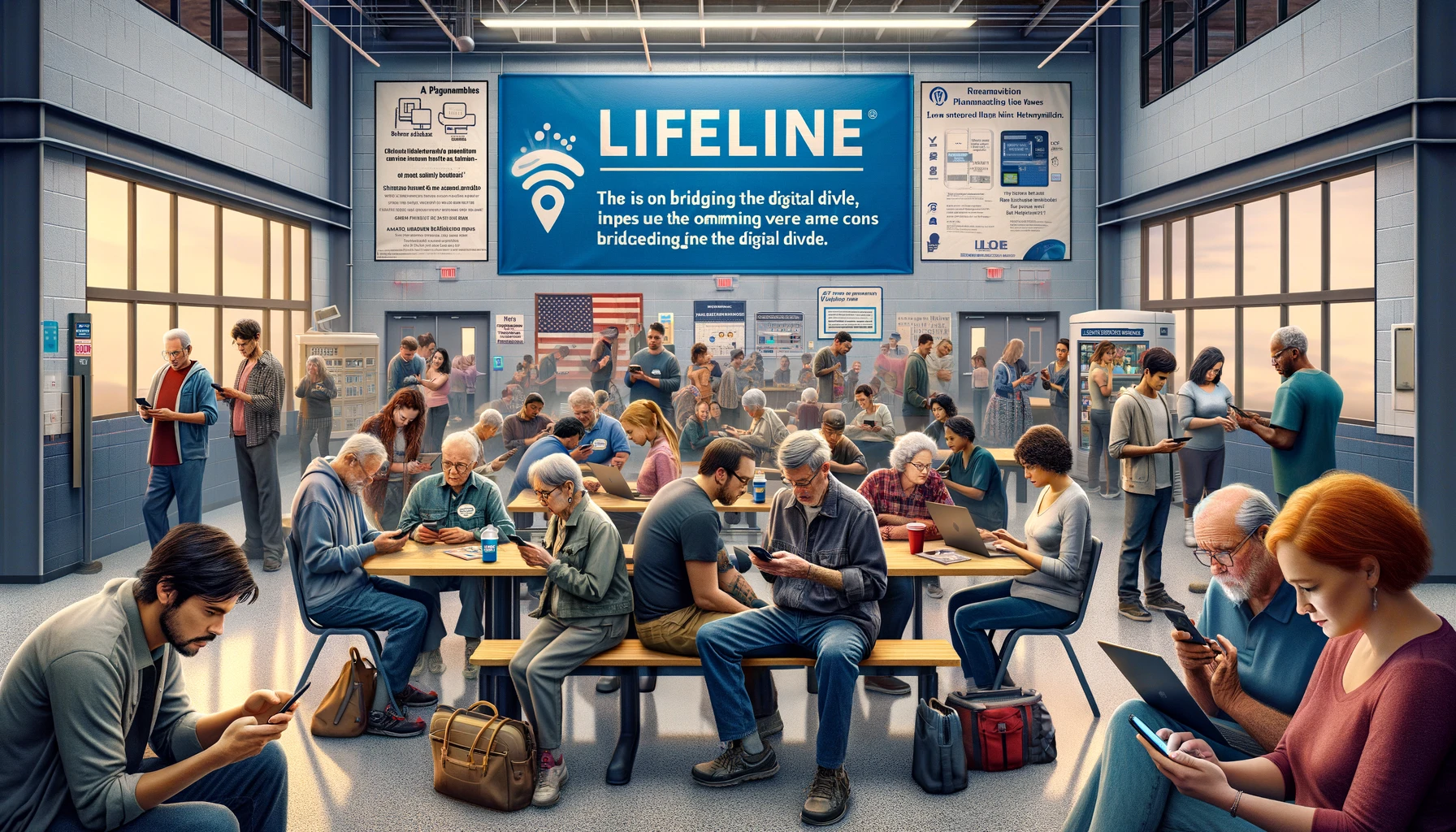Key Takeaways:
- Understanding the role of Lifeline programs in alleviating the digital divide.
- Insight into the impact of Lifeline on education, employment, and emergency services.
- Current trends and prospects of connectivity initiatives.
- Eligibility and application process for Lifeline assistance.
What Are Lifeline Programs?
The digital divide is a persistent problem in a society where connectivity is increasingly critical for access to services, information, and opportunities. The Lifeline program, established by the FCC, is vital to the United States government’s efforts to ensure that all Americans have the essential communication services. Individuals who qualify for this program are supported in maintaining a free government phone in Missouri, along with other states, as well as discounted or complimentary internet access, allowing them to stay in touch with the world around them.
Originally, Lifeline addressed the need for affordable telephone service, recognizing that communication is a fundamental need. However, as technology has advanced, the program has expanded to include broadband internet services, acknowledging the essential role that online access plays in day-to-day life. The eligibility for Lifeline programs is linked to income levels or participation in federal programs like Medicaid or SNAP, making connectivity accessible to those who might otherwise face barriers to such services.
Analyzing the Impact of Lifeline Programs
Since its inception, Lifeline has substantially impacted the lives of low-income Americans. Lifeline plays a pivotal role in ensuring that the most vulnerable populations are not left behind in our digitized world by providing discounted communications services. The program’s benefits are far-reaching, affecting various aspects of life including education, healthcare, and employment. Accessibility to the internet and telecommunications allows individuals to apply for jobs online, schedule medical appointments, and access educational materials, effectively leveling the playing field between different socioeconomic groups.
Educational outcomes, in particular, have seen significant improvement thanks to the connectivity provided by Lifeline. In times of crisis, the ability to continue learning remotely has proven indispensable.
Current Trends and Innovations in Lifeline Services
Lifeline services continuously adapt to incorporate the latest technology trends and remain relevant for modern users. The inclusion of broadband as a supported service under this program has been a significant development, allowing users to not only make calls but also participate in online communities, apply for online services, and engage with a plethora of resources on the internet.
The regulatory landscape that governs Lifeline is also dynamic, with ongoing discussions at the federal level about the best ways to modernize and streamline the program. Policymakers are debating measures to improve the program’s administration, expand access, and ensure its sustainability for future generations, which is essential for the program’s ability to evolve alongside technological advancements and changing societal needs.
Challenges and Criticisms of Lifeline Programs
Despite the successes of Lifeline, the program faces its fair share of challenges and critiques. Key among these is the assertion that greater efficiency and oversight are needed to prevent waste and misuse of funds. Advocates for the program argue that, while any public assistance program is susceptible to abuse, the Lifeline program is continually being reviewed and revised to enhance its integrity and impact.
Furthermore, the program is sometimes questioned on its implementation complexity and the level of awareness among potential beneficiaries. By addressing such concerns through education and community outreach, more individuals who are eligible for Lifeline can take advantage of the benefits, further reducing the digital divide and promoting social equity.
Future of Connectivity: Beyond Lifeline
The scope of the connectivity conversation is expansive, necessitating an integrated approach that includes governmental programs like Lifeline and collaboration with the private sector. Future connectivity solutions will need to address affordability, infrastructure, digital literacy, and technology adoption in underrepresented communities.
As society moves towards an ever-more interconnected existence, Lifeline exemplifies what is possible when policy is aligned with practical needs. The road to universal connectivity requires a commitment from all sectors to the idea that internet access is a cornerstone of modern life, essential for all citizens, not a luxury for a few.
How to Qualify and Apply for Lifeline Support
The process to qualify for Lifeline support hinges on proving eligibility, which may involve submitting documentation demonstrating income level or participating in other federal assistance programs. The application itself is straightforward, typically involving a form completed with the assistance of a Lifeline service provider. The critical first step for potential applicants is gathering the necessary documentation and contacting support to navigate the application process.
Lifeline’s application procedure underscores the importance of making social programs accessible and understandable for those they aim to benefit. It is a shining example of how governmental assistance can be impactful and user-friendly, enabling vital services to be delivered to those in greatest need, enabling connectivity and fostering inclusion in the digital age.
The Role of Community and Advocacy
Community engagement is a potent catalyst in promoting and enhancing Lifeline programs. Local organizations, aware of their communities’ unique needs, are instrumental in bridging the gap between nationwide policies and local realities. These organizations serve as a conduit for information and support and advocate on behalf of their communities for continued and expanded access to Lifeline services.
Socially conscious groups and non-profits across the nation have played a significant role in fortifying the reach of Lifeline programs. By rallying community support and placing pressure on policymakers, they ensure that the voices of the underserved are heard and that Lifeline programs are tailored to address the specific challenges different communities face.

